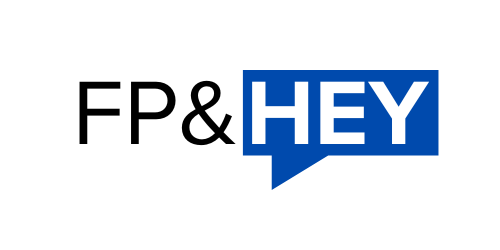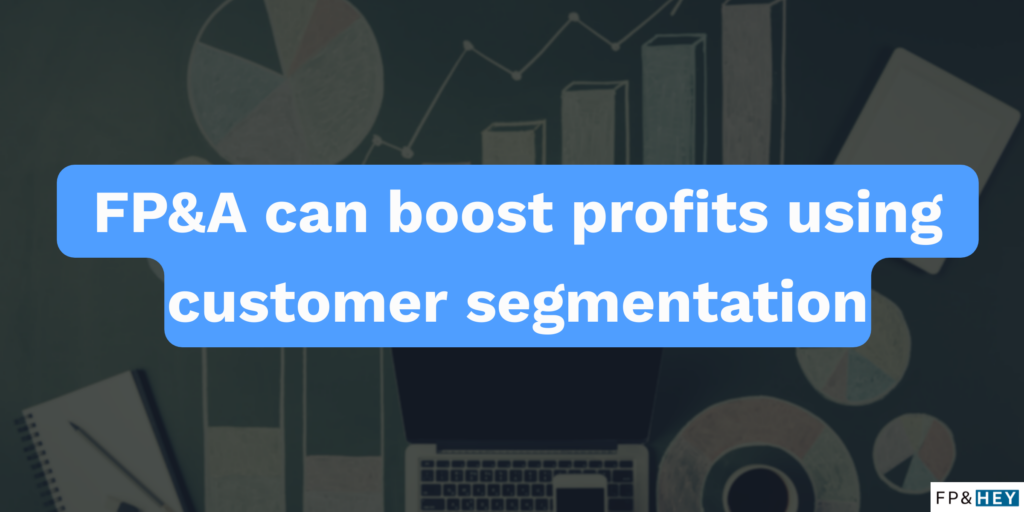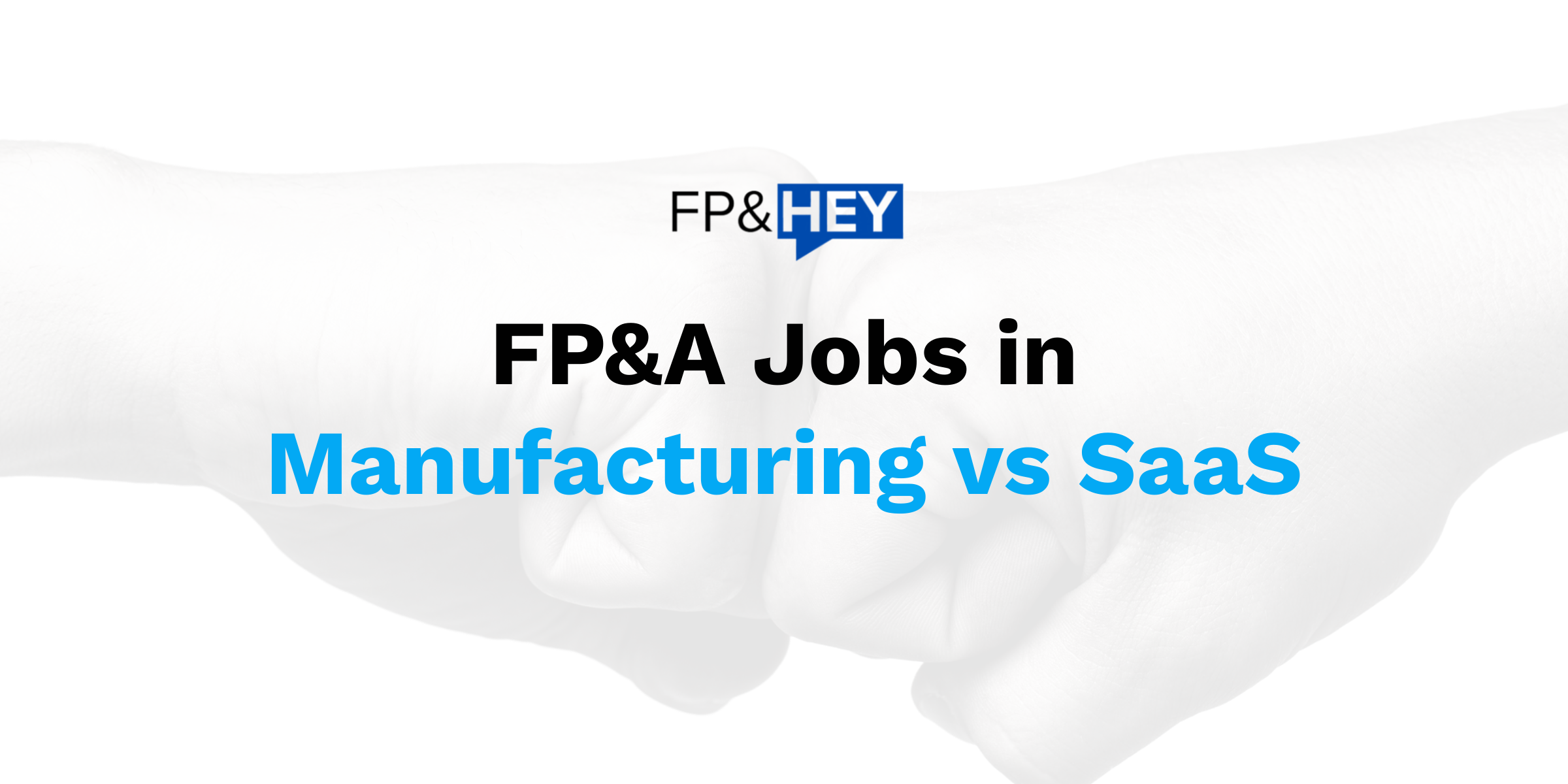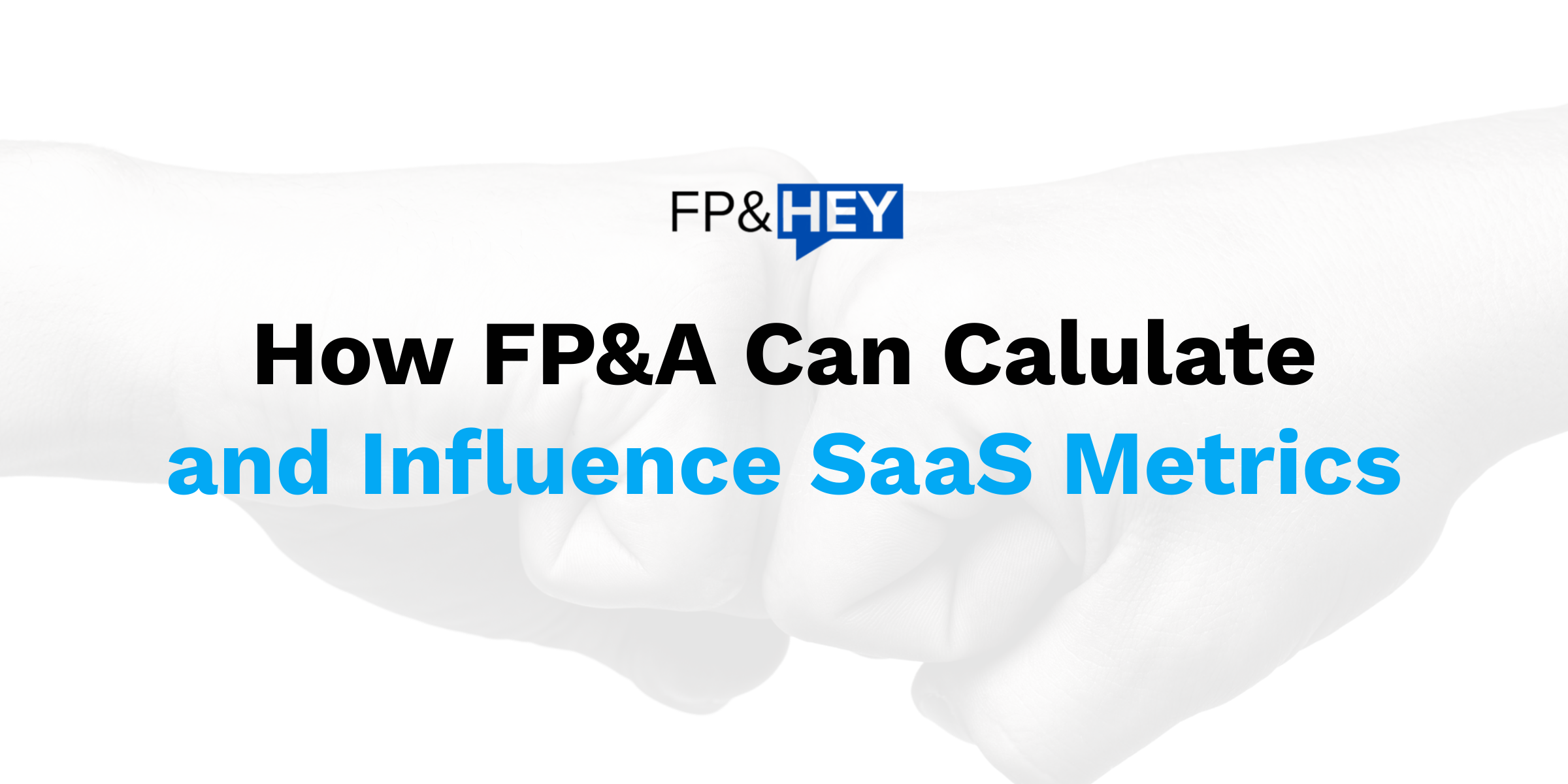👋 Hey there,
Exciting news! We joined as guests on FP&A Today’s podcast hosted by Paul Barnhurst.
Drew will be sharing his FP&A experience over a 20 year career and the key lessons he’s learned.
The episode will air in a few weeks, so stay tuned.
Now onto our post.
FP&A is WAY more than just numbers (which is why we find it fun).
In FP&A, you can have a direct impact on how your company manages its customers and make them more profitable.
Today’s topic is on the top 5 ways FP&A can drive profitability using customer segmentation.
We’ll cover the following:
- What is customer segmentation and why is it important
- Top 5 ways FP&A can use segmentation with your customers
- How to perform customer segmentation and drive profitability
Customer segmentation will help your company achieve more profitable results.
It’s also a skill that can take your career prospects to the next level. 💪
Let’s dive in.
What is customer segmentation
Great news, customer segmentation is exactly like it sounds.
Customer segmentation takes customers and divides them up into similar groups (aka segments).
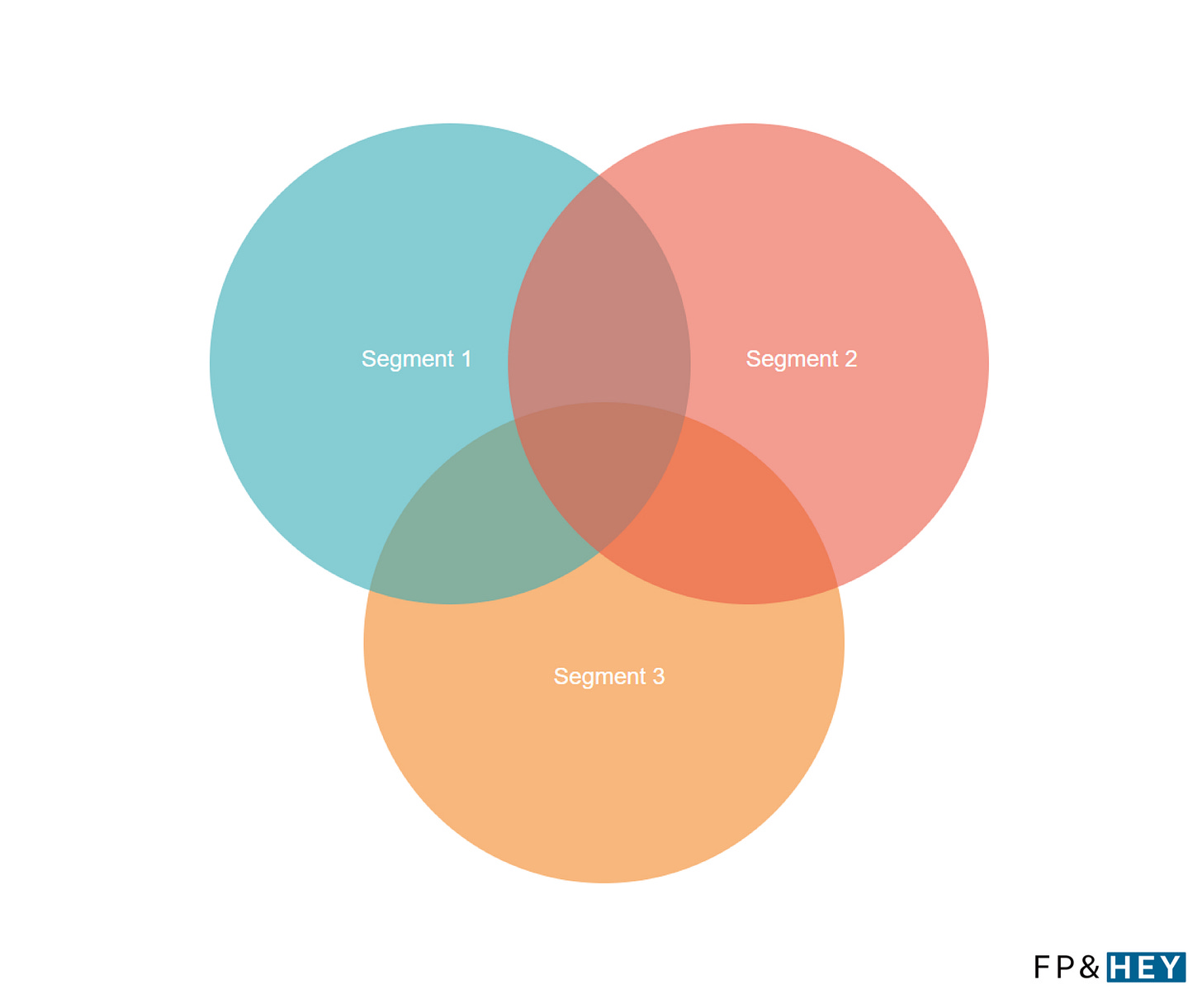
It’s useful for all companies regardless of the industry they’re in.
That means this is an evergreen skill you can use over and over again. ♻️
But why do this?
Because no customer is the same.
The trick is finding groups that have common expectations, attributes, and resource requirements.
This helps all your teams (marketing, product, sales, etc.) manage these customer groups in the most effective way possible.
And, most importantly, drive more profitable results for your company.
Which makes you (FP&A professional) look good.

Why customer segmentation is important
What would happen if your company only focused on customers that were never profitable?

Customer segmentation helps you determine which customers to:
✅ Attract (these customers drive long-term profitability)
❌ Avoid (that’s right, not all customers are good fits for your company)
And it’s not just about attracting profitable customers.
There are MORE benefits, which include:
- Improving customer relationships (⬆️ profit)
- Developing products your customers want (⬆️ revenue)
- Acquiring more customers in your niche space (⬆️ market share)
Customer segmentation is fuel for your relationship with fellow department team members (and a great way to launch your finance business partnering role).
Here are 5 ways you can become the go-to FP&A resource that helps your company realize these benefits.
Top 5 ways to drive customer segmentation in FP&A
Time to drive actionable insights. 👊

Let’s fire up your spreadsheet, your P&L transactional data, and CRM records.
Customer segmentation is all about tagging your customers by specific things.
These things are attributes that tell you more about customers:
- Behavior
- Expectations
- Economics
Below are 5 ways to achieve this.
1. Customer size
Your customers have their own businesses.
And their size could influence how they interact with your company’s product.
Let’s say you are a SaaS (software-as-a-service) company.
And your customer is a 10-person consulting shop.
Their head of IT might also be their CFO (that’s a lot of multitasking).

The point is, they may require more IT hand-holding because they are NOT experts in IT (like the head of IT at a 1,000+ employee company would be).
That means they may ask basic questions like:
How do I reset all my employees’ passwords?
Let’s ask, do these customers require more of your company’s resources?
If yes, consider increasing your pricing for smaller customers so that they make financial sense even with higher support ticket volume.
🔥TIP: Read our article on pricing strategy to get a better sense.
2. Customer location
Where your customers are located can have a big impact on shipping and support.
A customer located in dozens of places around the world can present unique challenges like multiple languages and multiple customs requirements.

Understand what these multi-location customers’ expectations are for shipping and support.
For example, they may require customer support in multiple languages.

Ensure you give the customer exactly what they need.
The happier the customer is, the longer they’ll stay, and the more profitable they will be.
3. Customer acquisition year
How long have your customers been with your company?
It’s a valid question because the customers that have been with you the longest may be inclined to be your best advocate.
This, in turn, results in free marketing leads through word-of-mouth (thank you, happy customers 🥰).
These word-of-mouth referrals have much higher win rates, which means those customers will be more profitable.

Make them feel special by knowing who they are, and offering them things like loyalty rewards and special pricing.
4. Customer product counts
Which customers are buying only one thing from your company vs multiple things?
This information is gold for your sales team.
It’s called white space.
🔥TIP: Read this to learn how to perform white space analysis.
And you can help your Sales team upsell customers that have a lot of this white space.
Which leads to more revenue and (you guessed it) profit.
5. Customer lifetime value (CLTV)
CLTV is an essential metric for FP&A professionals.
🔥TIP: Don’t know what CLTV is? Read this.
You can group your customers by their CLTV.
This is POWERFUL.
You now have segmented your customers by profitability, literally identifying the most ideal customers you have.
Tell marketing they’ll be able to target these types of customers and bring more into the marketing funnel.
This means you can expect more customers with higher profits in the future.
Great job, FP&A. 💪
How to analyze customer revenue by industry
All of this segmentation talk is great, but how the heck do you do it?
This is the part where we blend all sorts of awesome data into one spot (aka Excel).

The goal is to make this data super easy to analyze with way more impactful insights.
Here is a step-by-step guide below.
Step 1: Pull customer revenue data
Pull customer ID’s with revenue data from your financial system.
Then use an Excel data table to contain that information in one, easy place.
🔥TIP: No idea how to create a data table? Read this, we got you covered.
Then name this table for easy referencing like below.
FACT_CustRevenue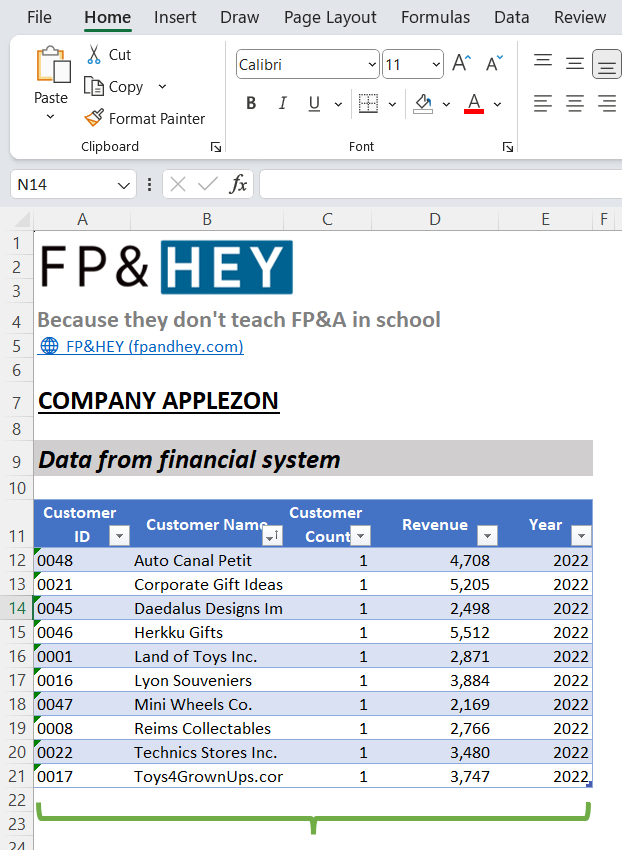
Step 2: Pull customer attributes from your CRM systems
Missing from that system are attributes like:
- Industry
- Company size
- Acquisition date
Those data points are likely in your CRM system.
Call this dimension (i.e. mapping) data table:
DIM_CustIndustry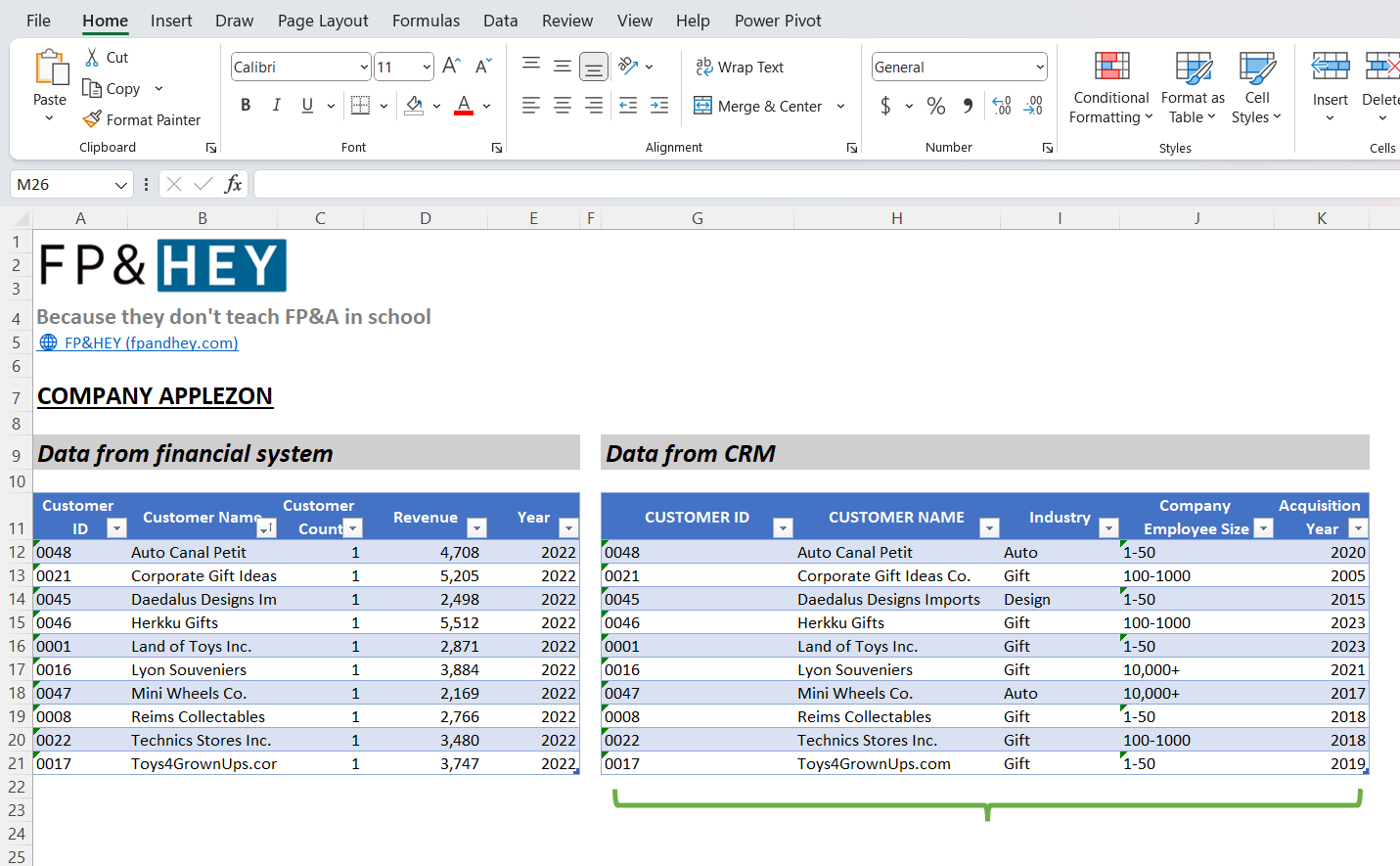
Step 3: Blend revenue data with CRM data
Now xlookup the CRM data against your financial system data.
🔥TIP: Don’t know x-lookup? Read this, and now you do.
Use this formula and watch the 10-second video below:
=XLOOKUP([@[Customer ID]],DIM_CustIndustry[CUSTOMER ID],DIM_CustIndustry[Industry])
Step 4: Summarize revenue by industry
Now we use a handy dandy pivot table.
REMEMBER: use your shortcuts. 😉
🔥TIP: Read this to understand why shortcuts will make you 10X faster
Watch the video below, and remember your shortcut to create a pivot table.
ALT + N + V + T + ENTER
And voila!
You can now do things like report revenue by industry.
Fun fact, the Gift industry is your biggest revenue driver at $27,465.
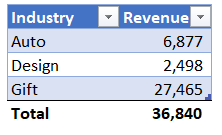
Once you surface data like this, more requests will come.
YOU will be the FP&A go-to person for value-adding augmented customer data. 👊
Conclusion: You are making it rain profits for your company
Well done, you are a guru in customer segmentation.
You can help other departments laser-focus their efforts to better serve customers.
All while driving profitable behavior.
Now the balls in your court.
Apply these skills in your job TODAY, which will:
✅ Make your CRO happy (more sales)
✅ Make your CFO happy (more profit)
✅ Make your business partners happy (better partnerships)
✅ Make your boss happy (their team is crushing it)
✅ Make your career prospects brighter (you added a sought-after skill to your arsenal).
Go have fun. 💪
Ready to take control of your company’s profits using customer segmentation?
Let us know by emailing us with your experiences and thoughts.
And if you have any topics you’d like us to cover to grow your FP&A career, let us know as well.
Now go have fun making an impact on your business and your career!
Cheers,
Drew & Yarty
PS: This post is 100% human-made 💪

